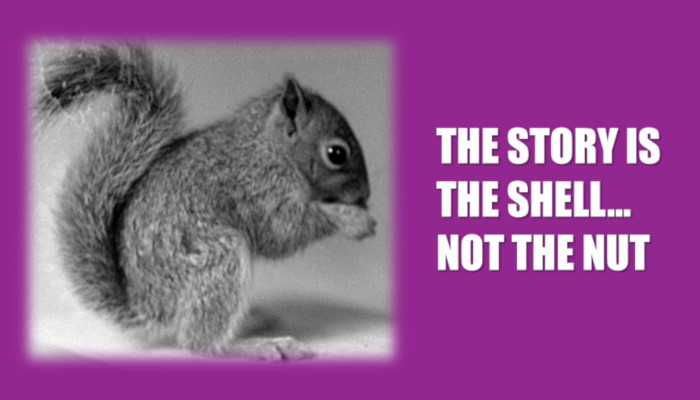
A couple of months ago, my grown daughter prefaced something with, “I forget the story, but this is what I took away from it.”
Her statement gave me pause because it changed my view on the relationship between message and story. Previously, I saw story as a permanent vehicle that delivered meaning from one person to another. Afterward, I saw story as more temporary–and I must admit–I didn’t like this revelation. I work hard to weave messages into my stories and have always considered them inseparable. But now, to think that messages could survive the stories that carried them? That was troublesome.
Then, upon further reflection, I realized that I was being selfish.
For the past three years, I’ve used this little corner of cyberspace to preach how storytellers must have empathy for their audiences. If I’m truly willing to follow my own advice, then I must admit that the audience cares more about the message than the story. As a result, rather than grieving the loss of a story, I should be celebrating the successful delivery of its message.
The role of any story is to pass meaning from one person to another. Good stories present the right words at the right time to both invoke and hold an audience’s interest long enough for them to make meaning. If that happens and wisdom is passed, does the delivery mechanism’s fate really matter? And to expand upon that concept, when enlightened audience members decide to pass their newfound wisdom onto others, do they need the original story to do so, or perhaps it’s best that they wrap the message into stories of their own?
It’s not about the story; it’s about the moral of the story.
The story is a shell whose sole purpose is to deliver the nut. It’s designed to last for as long as it takes to deliver its precious cargo, whether that’s to the ground where it grows roots or to a hungry mouth. Either way, the shell is cracked and discarded. That’s life. Some things give their lives for the sake of others and stories are no different.
The message is the nut. The story is the shell. And that’s alright by me.
Photo Credit: Horydczak, Theodor, Approximately, photographer. Animals. Squirrel side view, eating nut. Washington D.C, None. ca. 1920-ca. 1950. Photograph. https://www.loc.gov/item/thc1995010295/PP/.